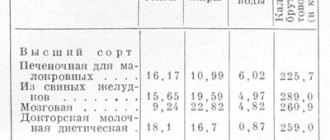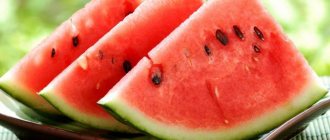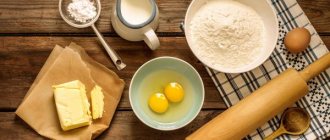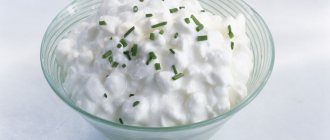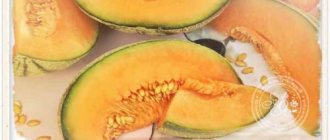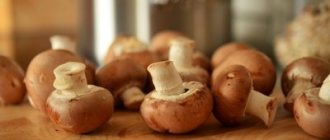There aren't many people who don't like processed cheese. It is often used to create original sandwiches that are so good in the morning. Firstly, it’s very tasty, and secondly, it doesn’t take any time at all: you brew coffee, spread cheese on the bread - and now a delicious and healthy breakfast is ready. This is an indispensable assistant when preparing other dishes, both hot and cold. In addition, the product is distinguished by some of its valuable properties that can benefit the body.
A little history
Where could such cheese appear? Well, of course, in Switzerland - rightfully considered one of the countries that founded the cheese business. It was invented back in 1911 by Swiss scientists Walter Gerber and Fritz Stettler, who worked in the defense industry. By this time, cheese fondue, which was made by melting hard cheese, was considered a traditional dish for conscripts in Switzerland. It was undoubtedly tasty, but it had one big drawback - the fondue very quickly became unusable. After conducting numerous studies, defense scientists told the world about melting salts. Their discovery made it possible to get rid of the staleness of melted cheese. And today, not a single processed cheese production can do without them.
Content:
- A little history
- Description and types of product
- Chemical composition and beneficial properties of processed cheese
- Production technology
- Use in cooking
- How to choose and store the product correctly
- Diet “Five processed cheese”
- Harmful properties of processed cheese
- conclusions
But processed cheese owes its rise to the masses to the Americans. Cheese merchant James Craft was not delighted with the product, which he nonetheless successfully traded. They say that he once uttered the phrase that it is not bad cheese that causes difficulties for sellers, but any cheese in general, because it is a bad product in principle. It needs to be stored under certain conditions, but it still tends to disappear quite quickly, besides leaving behind a lot of waste. In those days, merchants were required to cut off even a slightly weathered cut of cheese at the request of customers.
It is widely believed that it was Kraft who invented melting salts and was one of the first holders of a patent giving the rights to the production of processed cheese. This happened in 1916. However, some facts suggest the opposite.
The patent held by Kraft was entitled "Process for Sterilizing Cheese and Improving the Product Thus Produced." There was no mention of melting salts at all. Essentially, Kraft was melting down the cheese waste that had been bothering him so much and sealing it in jars, thus creating a kind of fast food prototype. And the melting salts necessary for the production of processed cheese were first mentioned in US patents ten years after they were discovered by the Swiss - in 1921.
During the First World War, Kraft managed to obtain an order to supply his cheese product to the American military, who were in France at that time. In the same France that has long been famous for its elite and delicious cheeses. And now, instead of the famous French cheeses, Americans were forced to eat canned cheese waste, even melted and sealed in jars. Kraft used the money raised from military supplies for a devastating advertising campaign, the effect of which was impressive: processed cheese overtook live cheeses in popularity. Every second resident of the country was ready to pay even more for them than for durum varieties. By the second half of the 20th century, processed cheese had captured 40% of the market for all cheese products. Of course, this could not but lead to indignation on the part of sellers of natural goods. The advertisement positioned this product as real cheese. They demanded that the new product be called differently, arguing that it was far from genuine. There were many options for names, but in the end we settled on the banal “processed cheese” - processed cheese.
Description and types of product
Processed cheese is a product made from rennet cheeses, cottage cheese, milk powder, butter and other dairy products. Various spices and herbs, special fillers and vegetable fats are often added to its composition. It is produced by melting at temperatures of about 90 degrees with mandatory additives in the form of melting salts, which help the cheese remain soft for a long time and not go stale. Every year you can see more and more different packaging with this product on supermarket shelves. It comes in boxes, plastic jars, and foil. There is both regular cream cheese and various variations: with bacon, mushrooms, ham, herbs and other additives.
In total, there are four types of processed cheese:
- pasty;
- slice;
- sweet;
- sausage.
Pasty cheese has a consistency similar to homemade sour cream. This species differs from others in its high fat and water content. It is plastic, easily recognizable by its delicate creamy taste and characteristic aroma. Often packaged in plastic containers. It is quite easy to spread on bread, use as a spread for sandwiches or to make sauces. The paste-like product can be found both in regular creamy form and with various additives in the form of spices and herbs.
Chunk cheese is much thicker than the previous type. It is easy enough to cut into slices or small pieces, hence its name. Its fat content can usually reach up to 70 percent. Most often it can be found in traditional foil packaging, familiar to most since childhood. This is exactly what the processed cheese “Druzhba” is familiar to all of us. Sliced cheeses can also be regular or with additives.
Sweet cheese absolutely lives up to its name. This is ordinary processed cheese, but with the addition of various flavorings and aromas. It is often used as a dessert. The most popular types of additives are:
- honey;
- cocoa;
- nuts;
- coffee;
- berries;
- syrups;
- chicory.
Most often it can be found in paste form, which makes it easy to use for both spreading and sauces.
Sausage cheese is considered the hardest of all four types. It contains the least fat and often contains additives in the form of cumin, pepper and herbs. This type is packaged in molds that give it the appearance of sausages. Sausage cheese is often smoked, which gives its taste a special piquancy and refined note.
Not Recommended Products
Which cheese is not recommended to be added to your diet on a diet:
❌The King of Cheeses from “Syroedov” will not work. Does not contain much toxic sodium nitrite.
❌ Unfortunately, Russian, Gouda and Dutch cheese from Savushkin will not work. They also contain sodium nitrite.
❌And Light with Classic from “Brest-Litovsk”.
❌ Creamy/Classic/Traditional cheeses from Alantal are not suitable for diet.
❌It is also not advisable to add Light cheese from “A Thousand Lakes” to your diet.
Chemical composition and beneficial properties of processed cheese
The energy value of processed cheese is approximately 260 kcal. It contains about 24 grams of protein and 13.5 grams of fat. It also contains cholesterol, saturated fatty acids, organic acids, starch, ash and water.
This product also contains a wonderful vitamin complex, as well as a useful mineral composition. Vitamins include B vitamins, especially pyridoxine, folic acid and cobalamins, vitamins A and , as well as vitamin D, which is essential for the body’s functioning.
The mineral complex is primarily represented by phosphorus, calcium and sodium. It also contains useful minerals such as sulfur, chlorine, potassium, and magnesium. And microelements:
- zinc;
- copper;
- iron;
- manganese.
Thanks to this composition, processed cheese can be almost completely absorbed by the body. It contains high-quality milk protein casein, which contains amino acids necessary for the stable and harmonious functioning of the body. You can also highlight its other useful properties:
- the vitamins and minerals included in its composition help improve vision, strengthen hair and nails, improve skin and complexion;
- has lower cholesterol content than durum varieties;
- significantly saturates the body, charges with energy and vigor;
- has a beneficial effect on the condition of bones, muscle tissue, and improves the condition of teeth.
Gouda cheese on a diet. Gouda cheese
Gouda cheese is named after the Dutch city of Gouda, where it was sold on the market for many centuries. Near this city there were dozens of farms where such cheese was made.
By the 19th century, the production of this type of cheese began to spread throughout Holland. It was during this time that Gouda cheese became the most popular cheese.
Originally, Gouda cheese was round like a wheel with rounded sides and weighed 12 kilograms. Inside, the cheese was light yellow with small holes all over the area (calorizer). The dry fat content of Gouda cheese is 48%. There are also small versions of the large cheese, whose weight is about 4.5 kilograms.
Gouda is a Dutch yellow cheese made from cow's milk. Fat content is usually in the range of 48-51%, but it can be less.
Light Gouda cheese has a mild, creamy flavor. The more mature the cheese, the more its character changes. It acquires a stronger aroma and becomes drier. The special pride of Gouda cheese is the cheese, which matures for almost a year. It's called The Dutch Master.
Over the years, many different variations of Gouda cheeses have been created. For example, all types of herbs and spices are added to cheese for different types of flavor. Examples are Gouda with cumin, herbs, mustard and pepper.
Calories in Gouda cheese
The calorie content of Gouda cheese is 356 kcal per 100 grams of product.
Composition and beneficial properties of Gouda cheese
Gouda cheese contains the amino acids lysine and methionine, vitamins B, A, E, C and D.
Eating Gouda cheese mainly has a beneficial effect on the skin, bone tissue, mental abilities and vision.
It is recommended to consume this cheese for pregnant and lactating women, as well as children starting from the age of two (calorizator). Eating it helps restore strength after severe physical and mental stress.
Use of Gouda cheese in cooking
Gouda cheese is great for breakfast, and it makes hot sandwiches especially delicious. It can also be added to a variety of dishes that call for added cheese, such as pasta, pizza, pies, or baked potatoes.
Production technology
The traditional preparation technology involves the production of processed cheese by pasteurizing a mixture of cheese products, milk, butter, and additives in the form of melting salts at a temperature of 75 to 95 degrees. This process allows you to preserve valuable and beneficial substances contained in products, as well as destroy harmful microorganisms. After this treatment, the cheese becomes viscous and viscous, homogeneous and can be stored for a long time.
A little later, another technology saw the light - UHT, in which the process takes place at a high temperature, about 140 degrees. Thanks to this, the product is completely sterilized and completely devoid of any microorganisms.
These products can only be differentiated by their shelf life. The sterile product can be stored for more than a year, while regular cheese has a shelf life of up to six months.
Cheese diet for 7 days
A fairly new trend in the fitness industry is. The diet is strict, there are few allowed ingredients, but the result of minus 4-5 kilograms per week is worth it. This is exactly what many people who are faced with excess weight think. It should be borne in mind that the cheese diet has a number of contraindications:
- allergy to lactose;
- all types;
- diseases of the liver, kidneys, pancreas;
- diseases associated with the gastrointestinal tract;
- diseases of the cardiovascular system;
- atherosclerosis.
Use in cooking
You can make all kinds of sandwiches, toasts, and sandwiches with melted cheese. It is often used to create delicious sauces and gravies. Used for preparing both first and second courses. Wonderful soups and cream soups are prepared with the addition of this product. It is also a component of chopped chicken cutlets, dishes with mushrooms, and various salads. It can often be found as part of pizza. Sweet cheese can be used as an independent dessert, or it can be added to other confectionery products to give them a certain taste and thickness. This cheese with chocolate additives is especially popular. It is also good in combination with white wine and nuts.
Homemade processed cheese
A good tasty and high-quality product can be prepared without any problems at home if you have the necessary ingredients on hand:
- milk – 1 liter;
- chicken egg - 2 pieces;
- cottage cheese – 1 kilogram;
- butter – 100 grams;
- baking soda – 1 teaspoon;
- salt – 1 tablespoon.
Pour milk into a saucepan and almost bring to a boil. Add cottage cheese there, mix thoroughly and wait for the curdling process. This will take approximately five minutes. All this time the mixture must be stirred. As soon as the cottage cheese has curled, you need to take it out and wrap it in several layers of gauze. It would be good to hang such a package so that the whey drains better.
While this is happening, you need to heat the oil in a frying pan, add salt, soda and beat in the eggs. If desired, you can add various spices or herbs here: dill, turmeric, pepper, thyme, parsley, nuts. Place the strained cottage cheese in a frying pan and simmer for about 15 minutes, stirring frequently so that it does not stick.
Soon you will notice how it thickens, gradually forming a viscous mass. As soon as it begins to lag behind the walls, the product must be removed from the heat. It is recommended to place the resulting cheese in a container and cover with a lid to avoid the appearance of unnecessary film on top of the product. After cooling, place it in the refrigerator for about 5 hours.
Varieties that promote weight loss
What nuts can you eat while losing weight?
On store shelves you can find a huge number of cheese types, and even the same variety can differ in fat content. A reasonable question arises, what kind of cheese can you eat while losing weight? When choosing a variety, you should give preference to those that are in the safe zone, that is, they have an average calorie content, low fat content, but are still rich in vitamins, minerals and microelements.
Brynza
Brynza
Nutritionists highly recommend feta cheese for weight loss. 100 g of product contains the daily requirement of protein. In addition, the vitamin-mineral complex maintains the body in working condition. The calorie content of the product varies from 160 to 260 kcal.
Important! The calcium contained in feta cheese is absorbed much more efficiently than in any other type of cheese.
Cottage cheese
This is a fairly large group of cheeses, which includes many different varieties. Curd cheese is on the green list of diets because it is low in calories. It is believed that curd cheeses contain less nutrients than hard varieties. Therefore, it is recommended to include it in the menu not as a component of the main diet, but as a dessert product or snack. It saturates quite quickly and relieves nervous tension. Recommended daily allowance – 70 g.
Cottage cheese
Suluguni
Suluguni cheese is very often used for weight loss, despite its rather high calorie content - 290 kcal. Its rich vitamin and mineral composition saturates the body. Even a small portion of cheese dulls the feeling of hunger for several hours and energizes you. It also lowers cholesterol levels and thins the blood. Suluguni is recommended for sports nutrition as a building material for the muscle frame due to its increased protein level.
Suluguni
Fused
Processed cheese is less useful for weight loss than other varieties. Sausage cheese can also be included in this group. But processed varieties are used to make healthy sandwiches. They are spread on whole grain bread or crispbread and eaten for breakfast. The calorie content of such cheeses is 220-260 kcal. You can melt the product yourself at home. Melting point – 50˚C. Soft cheese melts more easily, but hard varieties can also be used for these purposes, raising the temperature up to 80˚C.
Ricotta
Is it possible to eat Ricotta while losing weight? Nutritionists favor this variety. Calorie content is only 172 kcal. In addition, the product contains albumin, a protein that is a component of human blood, so Ricotta is quickly absorbed. Fat content is also within the acceptable range - 8-24%.
Chees Feta
Chees Feta
This is a soft cheese made from sheep or goat milk. It is recommended for people intolerant to lactose contained in cow's milk. Feta cheese is very useful for weight loss, as it contains few carbohydrates. The calorie content of the product is quite high - 290 kcal, so it is worth limiting the serving size. Also, when choosing Feta, you should pay attention to the fat content; for some manufacturers this figure can be up to 50%. The optimal fat content in the product is 24 g. Sometimes this type is found under the name Fetaxa.
Cheese is a useful element of dietary and healthy nutrition. It will be a great addition to salads, sandwiches, and snacks. It can be consumed as an independent product as part of a diet and in addition to fruits and vegetables. It is considered advisable to include this product in a diet designed for the gradual loss of excess body weight. You just need to focus on the characteristics (calorie content, protein, fat and carbohydrate content), the volume of the portion eaten and the time of day.
How to choose and store the product correctly
In order to choose a better quality product, it is important to follow fairly simple rules:
- the name of the product must have the wording “processed cheese” and no other;
- the product should not contain flavorings or dyes, only milk components and melting salts;
- the product must comply with GOST;
- the product packaging must be intact and undamaged;
- When choosing plastic packaging, you should only take the one with the stamp “PP”, but not “PS”, which means that it is made of harmful polystyrene.
If the cheese has already been purchased, its quality can be checked by the following criteria:
- good cheese should have a uniform consistency of a pleasant creamy shade;
- it should not stick to the knife and be empty inside;
- real cheese does not have a pronounced taste and smell, their presence indicates the content of synthetic flavors in its composition, or the spoilage of the product;
- the appearance of mold on the surface of the cheese indicates damage to the product.
The shelf life of processed cheese varies from two to six months. It should be stored in the refrigerator, at a temperature no higher than 4 degrees. When storing it, it should be wrapped in parchment or plastic film, since when opened it dries and is able to absorb various odors.
It is better not to use foil for storing it.
Is it possible to have cottage cheese on a diet?
Since many curd cheeses have a high calorie content, their use during a diet is undesirable. Nevertheless, curd cheese can be included in the diet in small quantities, but not every day and in the first half of the day. And if you combine such cheese with foods rich in fiber (vegetables, grain bread), you can neutralize the increased fat content. Among curd cheeses there are low-fat and low-fat varieties. They are recommended to be used during a diet.
Diet “Five processed cheese”
This cheese is also suitable for weight loss. The diet with its use is balanced, but the portion size is quite small, that is, there will always be a slight feeling of hunger. If you really want to eat, it is recommended to drink water. The course is designed for five days, the result of which will be a weight loss of almost 3 kg. This diet is suitable for quickly getting into shape on the eve of an event.
Sample menu for the day:
- breakfast (10.00) – unsweetened black coffee, processed cheese;
- lunch (12.00) – tomato with egg and herbs;
- lunch (14.00) – apple;
- afternoon snack (16.00) – 200 grams of low-fat cottage cheese, cucumber or sweet pepper, greens;
- dinner (20.00) – a glass of dry white wine.
An important condition for such a diet is to eat food exactly two hours apart, and wine is allowed to be consumed four hours after the last meal. This diet should be followed for all five days; the amount of food cannot be changed. During the entire diet, increased drinking is recommended, which should consist mainly of still mineral water.
Before trying the “5 Processed Cheese” diet, you should consult a doctor or nutritionist.
Is it possible to have processed cheese on a diet? Diet 5 cheeses: reviews
1. Marina, Ekaterinburg
Last year I was on this diet. True, not five days, but two weeks. As a result, minus twelve kilograms, which made me incredibly happy.
True, I didn’t drink wine every day, or rather only on weekends or holidays. I replaced it with one glass of one percent kefir.
Now I’m back on this diet to lose the extra four kilograms by the New Year that I couldn’t get off last year. By the way, my extra pounds have not returned. I believe that it is very important to support your body through physical activity.
2. Elena, St. Petersburg
For me, the 5 processed cheese diet was a real godsend. I have absolutely no willpower, and in this diet you don’t need to starve, but on the contrary, eat. In five days I lost six kilograms.
My breakfast started at 10 am with a cup of coffee without sugar and one processed cheese. At 12 o'clock, a salad with tomatoes and eggs or an omelet, fried without oil and salt. At 14.00 one apple. At 16.00 a cucumber and 100 grams of cottage cheese, I didn’t have enough for more, and in the evening at 20.00 a glass of wine.
I didn’t feel the feeling of hunger in the evening, which haunted me with many diets. In general, I really enjoyed this diet. I decided to repeat it a little later.
3. Oksana, Perm.
Today is already the fifth day, and I am full all the time. In principle, the results are already visible even in your clothes, your pants fall off, and five kilograms appear on the scale in minutes. I would like to note that this diet also has a lot of advantages:
1. teaches you to eat in fractions and by the hour, but all the nutritionists in the world talk about this;
2. a feeling of lightness in the body and a complete absence of hunger;
3. As a rule, people eat little protein and prefer carbohydrates, and even useless ones, and this is excess fat.
4. Margarita, Primorye.
As a girl who is always losing weight, I couldn’t ignore such a wonderful diet. What's more, it contains my favorite foods, divided into five meals.
Yes, the diet is strict, but I like it because I have no desire to break anything.
I stuck to the diet for seven days and said goodbye to five kilograms. I also felt lightness in my body.
In addition, as a rule, the costs of this diet are very minimal, since it does not consist of such expensive products. True, if in the summer.
Well, also a bottle of good wine, but it’s better not to skimp on your health here.
Harmful properties of processed cheese
This is a very high-calorie product, so it is not recommended for people who are prone to obesity or are overweight. It is not advisable to use it for diseases of the gastrointestinal tract, problems of the digestive system, as well as for renal failure. This product should also not be used by children, pregnant women and nursing mothers. The high sodium content in cheese can lead to an increase in blood pressure, so people prone to hypertension should not get carried away with it. It is also contraindicated in case of an allergy to the dairy products contained in it and in case of individual intolerance to the components included in its composition.
Cons of cheese for weight loss
All the beneficial properties of cheese specifically in relation to weight loss may not be present. And the reason for this is the dishonesty of manufacturers! Nowadays, it is almost impossible to find real, natural cheese made from milk and enzymes. Every cheese (there are exceptions, but extremely rarely) contains palm oil, nitrites and phosphates - enemies of health even with a nutritious and high-calorie diet.
And if the body is already in a stressful state due to dietary restrictions, then the intake of harmful substances can lead to problems with the functionality of the liver and kidneys.
We recommend reading about the Maggi diet for weight loss. You will learn about the principles of the Maggi diet, its pros and cons, contraindications, menu for the month, rules for leaving the diet. Read more about the low glycemic index diet here.
Cheese is an amazing and certainly healthy product. It has a beneficial effect on the functioning of organs and systems, normalizes intestinal microflora and stabilizes stool. If you choose a low-calorie product for weight loss, you can use it during snacks and even in the evening. Cheese can satisfy hunger and reduce cravings for the “forbidden” while strictly adhering to a low-calorie diet.
